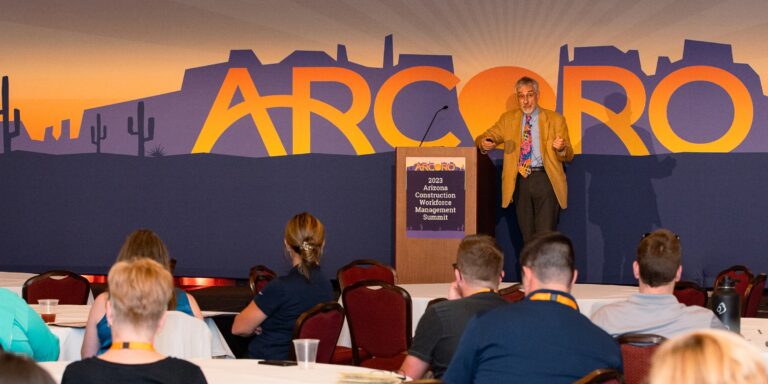Labor costs have always been a big chunk of a construction company’s budget. There are direct costs, like paying your workers their hourly wage, and indirect costs like insurance and workers’ compensation. And since projects can’t be completed without labor, it’s a necessary expense but one that’s steadily rising.
According to the U.S. Bureau of Labor Statistics, hourly earnings for construction workers have been steadily rising throughout 2022, with July’s average wage being $32.65 per hour, up more than $1 since July 2021.
Reasons for Rising Labor Costs
- Increased Competition for Workers. Current labor shortages have forced industries to pay more for top talent. In June, there were 5.5 million more job openings than workers to fill them fueling the competition between employers to hire available workers. Companies have had to offer candidates more incentives to join their business over the competition.
- Encouraging Recent Graduates to Work in Construction. The construction industry is facing a major skills gap due to Baby Boomers retiring; more than 3 million more Boomers retired in the third quarter of 2020 compared to 2019. The problem is younger generations aren’t stepping in to fill the retirees’ shoes which could be due to a push to earn a four-year degree, working conditions in construction and/or safety concerns in construction.
- Enticing Workers Back to Construction. When the pandemic hit, the construction industry came to a standstill. During that time, more than 60% of construction workers who lost their jobs, left the industry permanently. Raising hourly wages is a way to entice them back to the industry.
But no matter the reason behind recent wage increases, paying higher wages ultimately eats into profits. Since you must hire workers to complete projects, the solution is to digitize areas of operation where you can save money, like recruitment and onboarding.
Digitization of Recruitment Processes Reduces Your Cost to Hire
It is estimated that it costs about $4,000 to hire a new employee. Those costs can be attributed to the time and money spent writing and posting a detailed job description, attending a job fair, doing a background check and interviewing candidates. When you use an applicant tracking system or ATS, those costs can be reduced by speeding up your time to hire.
Why the Time to Hire Metric is Important
The time to hire metric equals the number of days it takes to hire a new employee. It begins when a candidate responds to your job posting and ends when he or she accepts an offer, spanning the length of time a candidate is in your talent pipeline. According to LinkedIn, the average time to hire is 30 days. If your time to hire is typically longer than average, if could mean there are inefficiencies in your process. For example,
- How long does it take you to spot that you have the right candidate?
- How fast do you move when you find the right person?
- Where are the bottlenecks in your hiring process?
The longer it takes to hire a candidate, the more money you’ll spend. If you take too long to recognize and respond to candidates, the right candidate may decide not to accept an offer or have taken another job and you have to start the process over.
How an ATS Makes Recruiting More Efficient
An ATS can speed up your time to hire by automating many of the hiring processes’ most time-consuming tasks. An ATS can automatically post job descriptions to multiple job boards and help source candidates, reducing recruitment costs. An ATS tracks every applicant who applied for a position with your company. That information—name, state, zip code, email, resume, etc.—all gets stored in a candidate database that can be viewed, reviewed and searched at any time. Starting your search in your system saves time, money and builds on the relationship that already exists with past candidates.
A full-featured ATS will automatically track all applications, providing reports to maintain EEOC and AAP compliance. It also allows you use candidate batching, which targets candidates based on pre-screening questions, so you don’t have to report on hundreds of candidates.
Digitization Reduces Onboarding Costs
Once you hire an employee, there are other costs to consider, like onboarding. It can take six, nine or 12 months to fully onboard an employee and integrate them into the company. Training is a big part of onboarding and the longer it takes to train, the more expensive the process becomes.
Costs Associated with Onboarding
Onboarding is a process. There are several steps to follow to make sure your new employee is up-to-speed on what’s required to do the job.
- Paperwork: It takes a lot of hours to process all of the necessary forms required for new employees. These forms include: W-4s, I-9 employee eligibility verification forms, state tax withholding forms, direct deposit forms, E-Verify forms, benefits enrollment and employee handbooks. Glassdoor estimates it takes about 10 hours of administrative work to get it all done. If your recruiter makes $25 an hour, this part of the onboarding process equals $250 per employee.
- Training: Multiple hours and money is spent training employees. According to ADP’s 2018 Training Industry Report, it costs on average about $986 to train each new employee. That number will be higher for small companies with less resources.
- Tools and Software Costs: Equipment like parking permits, branded clothing, safety equipment and software are necessary but cost money. Companies can keep an eye on costs by tracking every item that’s handed out to new employees into an inventory system.
Calculating your onboarding costs is similar to calculating your cost per hire. You add up all the costs, including man hours, required to onboard new employees and divide the amount by the number of employees you’ve onboarded this year.
How Onboarding Software Reduces Onboarding Costs
A good onboarding system can streamline workflows with built-in automated efficiencies. You can send communications to hires about logins, schedules and training. All necessary forms can be filled out by the employee from home, before day one – eliminating the need to do it from the job site. All documents are stored and HR administrators are alerted when an new employee has completed an action, so you never waste time before moving on to the next step. Ongoing training and development is scheduled for the employee. He or she can complete it on their own time and they can track their progress.
A great hiring and onboarding process is a must, and not providing one because of the costs involved will only cost you more down the road. With HR software’s ability to automate some of the most time-consuming processes, investing in one will help reduce your future hiring and onboarding costs.
The cost of labor may go up and down, but you can offset the changes by adopting systems that help you become more efficient in other areas, reducing your overall costs.

Get started by scheduling a demo of Arcoro’s ATS and Onboarding modules.




